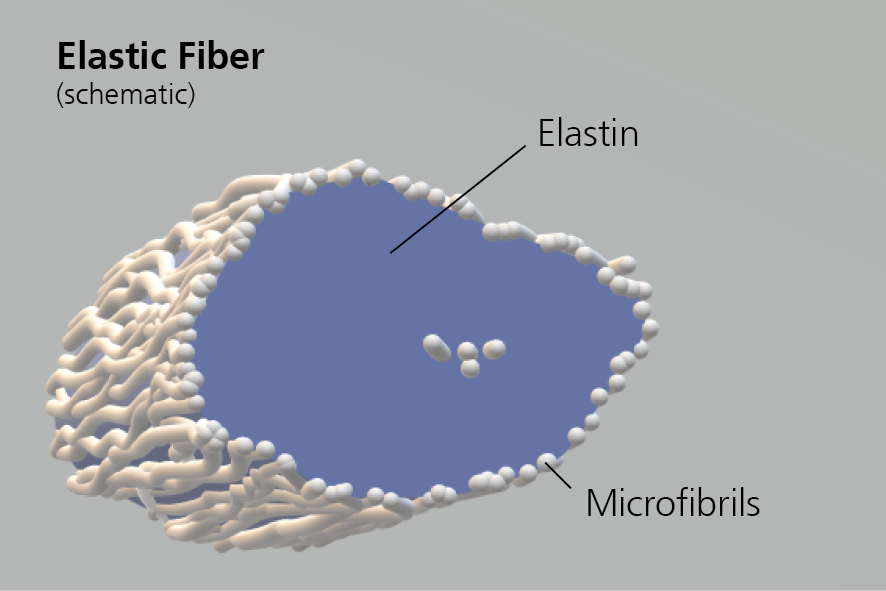
The evolution of vertebrates was accompanied by the development of flexible and extensible tissues. This is evident, for example, from the pronounced structural changes in the walls of blood vessels that were required for conversion from an open to a closed circulatory system. The properties of elasticity and extensibility were made possible primarily by the emergence of elastic fibers, which are very abundant in larger blood vessels. The fibers store the potential energy required to maintain blood flow during diastole and in this way enable proper cardiovascular function. Elastic fibers are also found in many other organs that must be reversibly deformable for physiological function. These include the lungs, skin, elastic cartilage or ligaments. Elastic fibers are found in the extracellular matrix (ECM) and consist of an outer sheath of fibrillin-rich microfibrils and a dense core of elastin, which accounts for over 90% of the total volume, as shown schematically in Figure 1.